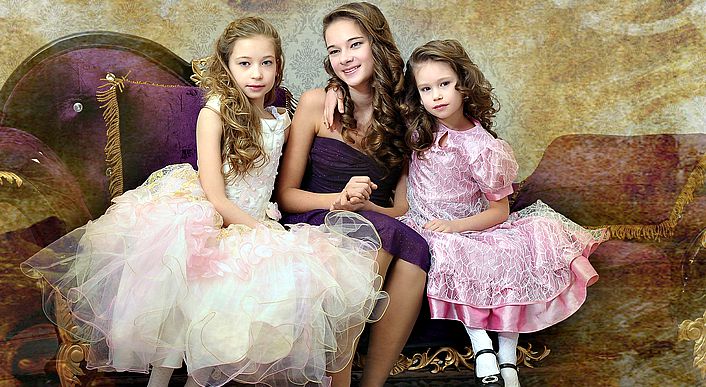 “The Weird Sisters” by Eleanor Brown, Sibling Position, Part 1 of 2
“The Weird Sisters” by Eleanor Brown, Sibling Position, Part 1 of 2
Before launching into this article, you might want to read:
1. What Does Your Sibling Position Have to Do with Your Relationship? Walter Toman’s Birth Order Tendencies
2. The Myth that More Attention is Better—Coming.
3. Me? Host Thanksgiving? You’ve Got to Be Crazy!
4. But What About Only Children and Sibling Position?—Coming.
5. From the Bowen Center on Sibling Position

“The Weird Sisters” by Eleanor Brown
Ms. Brown does a lovely job with the novel and I’d certainly consider The Weird Sisters good reading, but for this purpose excerpts will be presented not in chronological or ‘reviewer’ order but in terms of relevance to sibling position.
Remember, a number of factors go in to determining functioning. Sibling position is only one factor. Therefore, when you think, “Hey! I’m not like that!” try to not let those thoughts throw you off of the story.
The Weird Sisters follows the lives of three sisters during a year that changes their lives. Or–better stated, a year which presents the opportunity for each to change. Change is hard. Some people will change when they get a ‘calling.’ The rest of us only change when we feel the licks of the fire.
The event that draws them back home–their mother’s cancer and cancer treatment—serves as the stage on which each young woman examines her life so far and re-considers where she wants her life to go. While the mother’s ill health is the obvious call to return, each daughter admits that behind her return home is an awareness of her failure to truly ‘launch’ from the family.
Each is aware that her choices and behavior in life so far has been a repeated playing out of the sibling-functioning position learned in the family. Now in their twenties and early thirties, the sisters are tired of being ‘stuck’ and are back home to give adulthood another shot.
Ms. Brown does a neat job of describing the very different way each girl has approached relationships with men: “Cordy [the youngest, ready to take what’s left] had always been compliant. While Rose searched [the eldest, searched for a guy to suit her requirements] and Bean [the middle daughter without direction but trying to please] made herself available.”
 When one member of a family changes, every other member changes to re-establish equilibrium. In their growing up years, the parents were always close and self-sufficient–meaning that none of the daughters was required to function in a certain way to balance the parents’ marriage.
When one member of a family changes, every other member changes to re-establish equilibrium. In their growing up years, the parents were always close and self-sufficient–meaning that none of the daughters was required to function in a certain way to balance the parents’ marriage.
The father, dependent on his capable wife’s unflagging support, enjoyed the idea of fatherhood and basked in watching his wife’s  enjoyment of the girls, but he hasn’t had a strong desire to form separate relationships with them. He has been content with his daughters’ preference to share emotional issues with their mother. In fact, he’s been grateful to dodge long feeling-laden discussions.
enjoyment of the girls, but he hasn’t had a strong desire to form separate relationships with them. He has been content with his daughters’ preference to share emotional issues with their mother. In fact, he’s been grateful to dodge long feeling-laden discussions.
That’s all about to change. As the story opens, the father’s “rock” is weakened by disease and treatment. She cannot be everything to him; she cannot be ‘everything’ to her daughters. The family is thrown into a state of shuffling and searching for balance.
It’s important to keep in mind that our functioning position is not some kind of diagnosis or malformation. It’s the reality of systems in development. The problem comes in when behaviors learned as part of the system become rigid ways of functioning, thus limiting our professional and personal lives to what can be accomplished by operating out of our stuck positions. Here is a snippet in which Ms. Brown describes the sisters in a small interchange outside their mother’s sick room. Notice the how their words and actions clarify sibling position.
“Be quiet,” Rose [the over-seer] said, looking up, though Bean had made hardly a sound. “Mom’s resting.”
Bean [the mediator] made exaggerated tippy-toe motions, placing her finger over her lips.
Cordy [the one who has fun] giggled.
Rose [the over-seer is mildly displeased] huffed and went back to her book.
A good plot happens when characters grow. The best kind of growth is when a character is faced with his or her most feared challenge and is able to trail-blaze a new path. “The Weird Sisters” by Eleanor Brown, Sibling Position, Part 2 of 2, will observe each daughter changes with the challenges life brings. Rose, Bean, and Cordy change, not because they want to, but because the system demands new behavior. Each daughter ends up pleased with the results.
How did they do it? “The Weird Sisters” by Eleanor Brown, Sibling Position, Part 2 of 2. Next entry.





